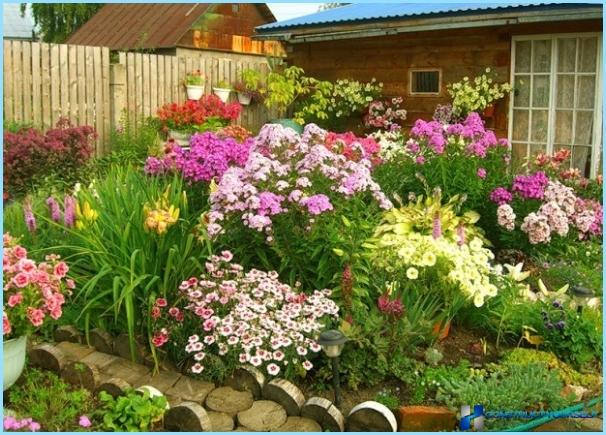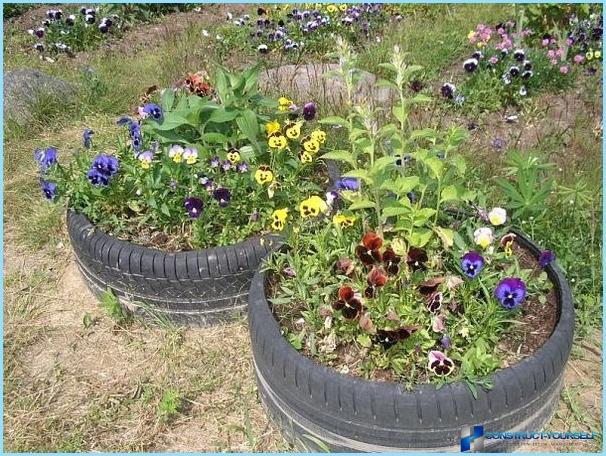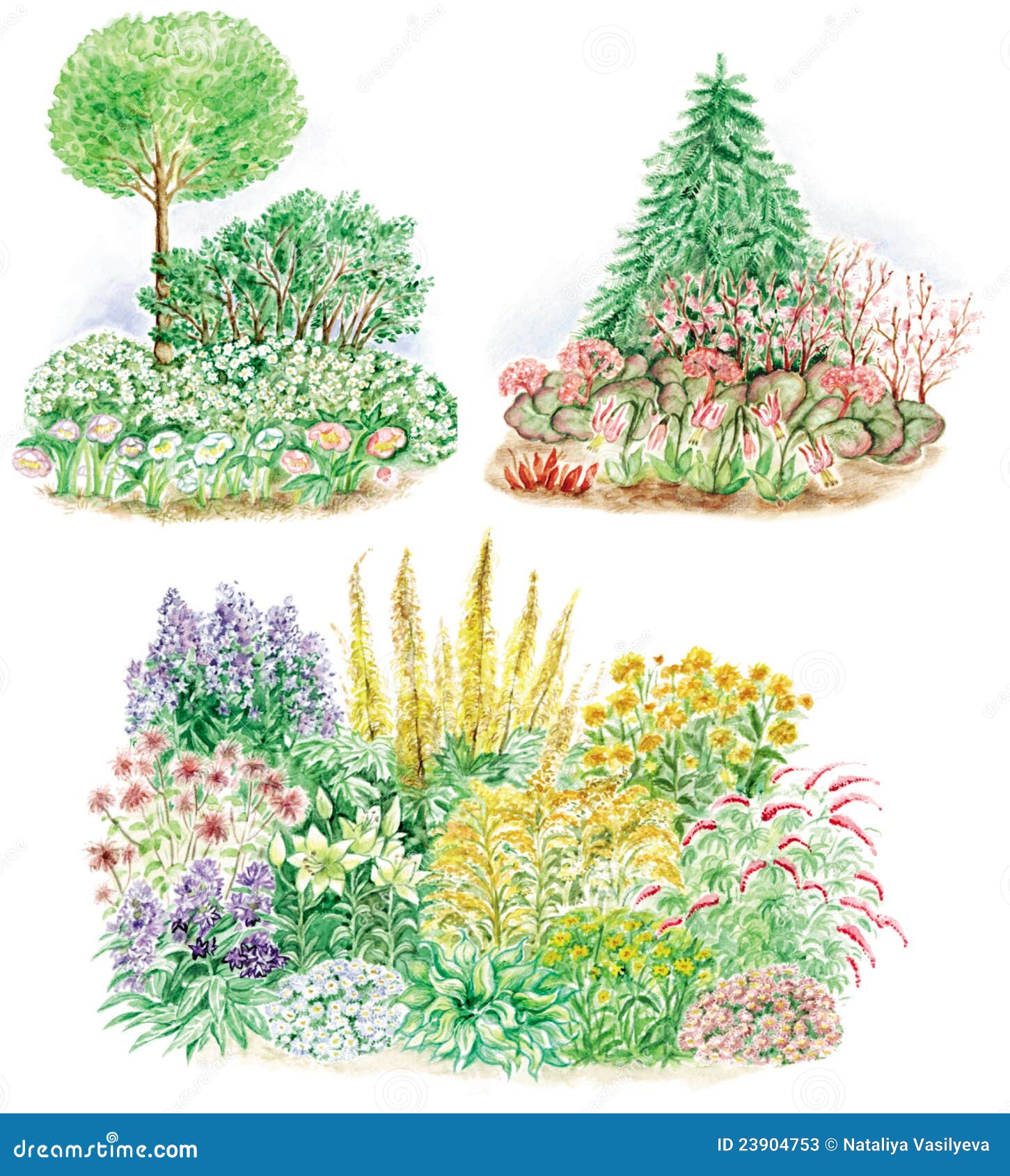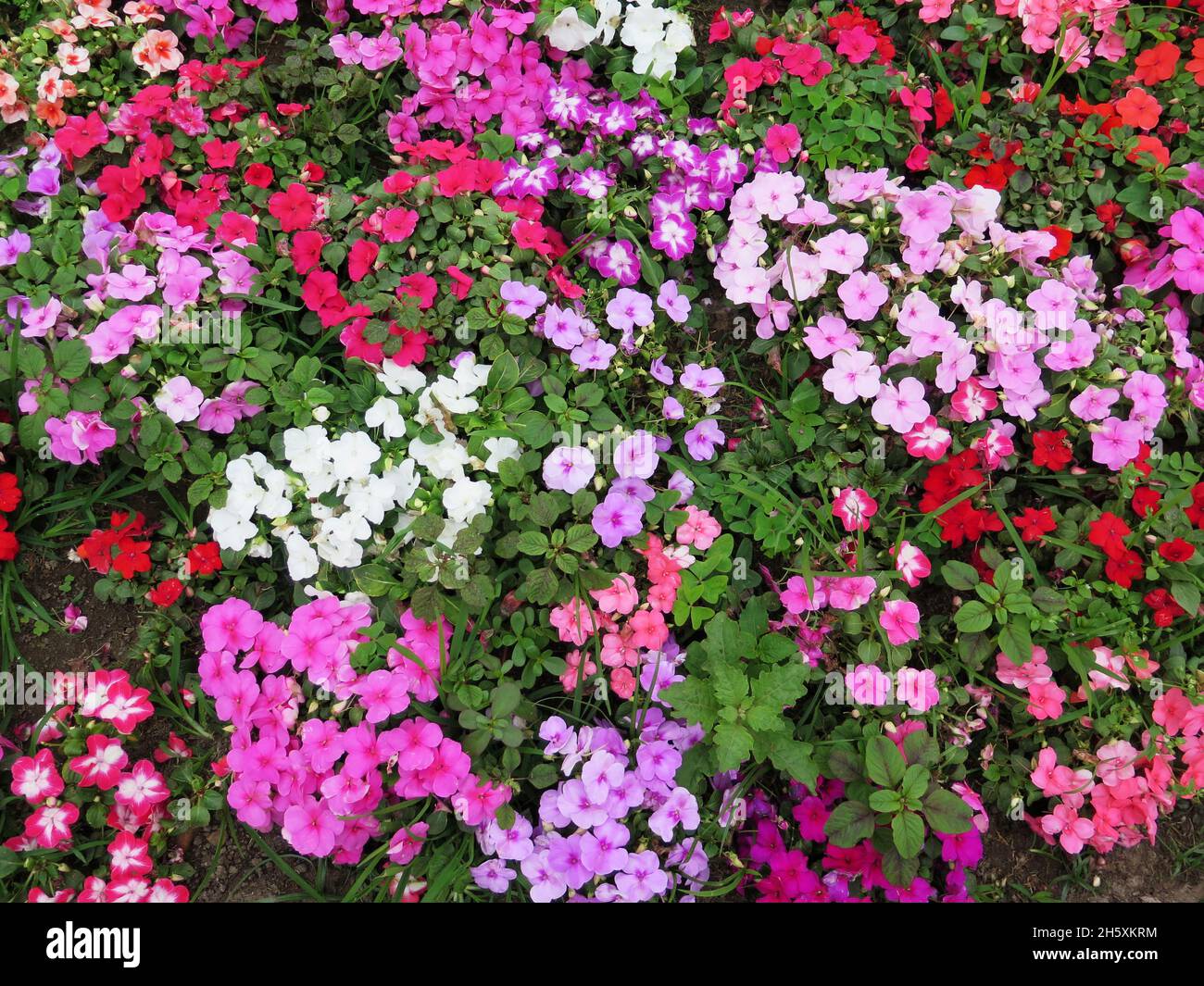Modern Flower Beds: Bloom Brighter
Modern Flower Beds: Bloom Brighter
The humble flower bed. A staple of gardens for centuries, it's undergone a dramatic transformation in the modern era. No longer are we confined to stiff, symmetrical arrangements of predictable blooms. Today's contemporary garden design embraces a more dynamic, artistic, and ecologically conscious approach to flower bed creation. This article delves into the key elements shaping the modern flower bed, offering inspiration and practical advice for creating a vibrant and thriving space in your own garden.
Redefining the Rules: Breaking Away from Tradition
Traditional flower beds often followed strict rules: symmetrical layouts, highly structured plantings, and a focus on a limited palette of "classic" flowers. Modern designs challenge these conventions, embracing asymmetry, naturalistic planting, and a bolder, more experimental approach to color and texture. The emphasis shifts from perfectly manicured uniformity to a more relaxed, organic aesthetic that reflects the beauty of nature's own unpredictable patterns.
Key Principles of Modern Flower Bed Design:
-
Layering and Texture: Instead of flat, single-level plantings, modern flower beds utilize layers of varying heights and textures. Tall perennials form a backdrop for mid-height flowering shrubs, which in turn frame low-growing groundcovers and perhaps even trailing plants. This layering creates depth and visual interest, extending the season of interest in your garden. Think about combining coarse textures like grasses with fine textures like ferns, and contrasting the smooth petals of roses with the prickly foliage of succulents.
-
Color Palettes: Forget the predictable pastels! Modern flower beds often feature bold and unexpected color combinations. Think contrasting shades, harmonious monochromes, or even jarring juxtapositions that create a visually striking impact. While traditional gardens might shy away from mixing warm and cool tones, modern designers often embrace this contrast to create energy and excitement. Consider using a color wheel to explore complementary, analogous, or triadic color schemes.
-
Naturalistic Planting: The rigid lines and precise spacing of traditional flower beds are giving way to a more naturalistic approach. Plants are grouped in drifts and clumps, mimicking the way they would grow in a wildflower meadow. This creates a more informal, relaxed feel, and often encourages biodiversity by providing habitats for beneficial insects and pollinators.
-
Sustainable Practices: Modern garden design increasingly prioritizes sustainability. This includes using drought-tolerant plants, minimizing the use of chemical pesticides and fertilizers, and incorporating water-wise irrigation techniques. Choosing native plants is also crucial, as they are better adapted to the local climate and require less maintenance.

- Incorporating hardscaping: Strategically placed hardscaping elements, such as stepping stones, gravel pathways, or raised beds, can enhance the overall design of a modern flower bed. These elements not only add visual interest but also help to define spaces, improve drainage, and create functional areas within the garden.
Choosing the Right Plants: A Modern Selection
The plant choices are central to the success of a modern flower bed. Consider the following when selecting plants:

-
Form and Shape: Select plants with a variety of forms and shapes to create visual interest. Combine upright spires with cascading plants, rounded shrubs with delicate ferns, and architectural grasses with bold-leaved perennials.
-
Bloom Time: Plan your planting scheme to ensure continuous blooms throughout the growing season. By selecting plants with staggered bloom times, you can enjoy a succession of colors and textures from spring through fall. Consult plant catalogs or online resources to identify plants with complementary bloom periods.
-
Sunlight and Soil Conditions: Pay close attention to the sunlight and soil conditions in your garden. Choose plants that are well-suited to these conditions to ensure their health and vigor. Consider incorporating soil amendments to improve drainage or fertility if necessary.

-
Maintenance Levels: Be realistic about the amount of time and effort you are willing to dedicate to garden maintenance. Select plants that are relatively low-maintenance and require minimal pruning or deadheading. Consider the hardiness of plants to your specific climate.
-
Local Flora: Prioritize native plants whenever possible. They are not only adapted to your local climate and soil conditions but also support local wildlife and ecosystems.
Modern Flower Bed Styles: Inspiration and Ideas

Here are some specific styles that exemplify the spirit of modern flower bed design:
-
The Cottage Garden Reimagined: This style embraces a relaxed, informal aesthetic, reminiscent of a traditional cottage garden, but with a more contemporary twist. Instead of tightly packed rows, plants are grouped in loose, flowing clusters, creating a sense of natural abundance. The color palette might be more vibrant and eclectic than in traditional cottage gardens.
-
The Minimalist Garden: This style prioritizes simplicity and clean lines. A limited palette of plants, often featuring grasses, succulents, and architectural perennials, is used to create a calm and serene atmosphere. The focus is on the inherent beauty of individual plants and their interaction with the surrounding landscape.

-
The Prairie Garden: Inspired by the North American prairie ecosystem, this style uses native grasses, wildflowers, and perennials to create a naturalistic and sustainable flower bed. It's characterized by its undulating forms and vibrant displays of color throughout the growing season.
-
The Modernist Garden: This style embodies a sense of geometric precision and clean lines. Plants are arranged in carefully considered patterns and shapes, often using raised beds or other hardscaping elements to define spaces. The color palette is often monochromatic or features a limited number of carefully chosen shades.
Beyond the Blooms: Adding Extra Dimensions

To truly elevate your modern flower bed, consider these additions:
-
Ornamental Grasses: Grasses add movement, texture, and visual interest to a flower bed, especially in the fall and winter months when many flowering plants are dormant. They also provide valuable habitat for wildlife.
-
Water Features: A small fountain or pond can add a soothing element to the garden and create a haven for birds and other wildlife. The gentle sound of flowing water enhances the overall ambiance.

-
Lighting: Strategic lighting can highlight the beauty of the flower bed at night, extending its appeal beyond daylight hours. Use low-voltage lighting to create a warm and inviting atmosphere.
-
Sculptures and Art: Incorporate strategically placed sculptures or art pieces to enhance the overall aesthetic of the garden. These elements can add personality and individuality to your design.
Maintaining Your Modern Masterpiece

Even modern flower beds require some maintenance to thrive. Regular tasks include:
-
Watering: Water deeply and infrequently, aiming to moisten the root zone thoroughly rather than sprinkling the surface. Consider using a drip irrigation system for efficient water use.
-
Weeding: Remove weeds regularly to prevent them from competing with your desired plants for nutrients and water.

-
Deadheading: Remove spent blooms to encourage further flowering and prevent the formation of seeds.
-
Fertilizing: Apply a balanced fertilizer in spring to provide your plants with essential nutrients. Consider using organic fertilizers to minimize environmental impact.
-
Pruning: Prune plants as needed to maintain their shape and size, removing any dead or damaged branches.

Creating a modern flower bed is an art form that blends practicality, aesthetic sensibility, and ecological awareness. By embracing the principles outlined above and letting your creativity flow, you can transform your garden into a vibrant, sustainable, and endlessly inspiring space. Remember, the key is to experiment, adapt, and most importantly, enjoy the process of cultivating your own unique modern masterpiece.
Flowerbeds: Modern Garden Wow!
The humble flowerbed. A seemingly simple element, yet it holds the power to transform a garden from ordinary to extraordinary. In the realm of contemporary garden design, the flowerbed has evolved far beyond its traditional, neatly-bordered confines. Today's modern flowerbeds are bold statements, dynamic displays of color and texture, and integral components of a holistic design aesthetic. This article will delve into the exciting world of modern flowerbed design, exploring various styles, planting techniques, and essential considerations to help you create a truly breathtaking focal point in your own garden.

Beyond the Borders: Redefining Modern Flowerbed Design
The key difference between traditional and modern flowerbeds lies in their approach to structure and aesthetic. Traditional designs often feature rigid, geometric shapes with tightly controlled plant arrangements. Modern flowerbeds, on the other hand, embrace a more fluid, naturalistic approach. This doesn't mean abandoning structure altogether; rather, it’s about creating a sense of organic flow and visual dynamism. Think sweeping curves, asymmetrical layouts, and a playful interplay of heights and textures.
Several key trends are shaping the face of modern flowerbed design:

-
Minimalist Elegance: This style prioritizes clean lines and a limited color palette. Think predominantly white, grey, or silver foliage punctuated by pops of vibrant color from strategically placed blooms. The focus is on creating a sense of calm and sophistication. Succulents, grasses, and structural plants are frequently used to build texture and visual interest.
-
Bold & Maximalist: In contrast to minimalist designs, maximalist flowerbeds embrace a riot of color and texture. This style celebrates abundance, layering different plant heights and bloom times to create a constantly evolving display. A maximalist flowerbed can be a true explosion of life and energy, perfectly suited for a vibrant and expressive garden.
-
Layered Landscaping: This approach integrates the flowerbed seamlessly into the surrounding landscape. Instead of a sharply defined border, the plants may spill gently into the lawn or pathway, creating a more natural, integrated look. This style works particularly well with groundcovers, trailing plants, and meadow-style plantings.

-
Geometric Precision: While often associated with traditional designs, geometric shapes can also be incorporated into modern flowerbeds in fresh and innovative ways. Think raised beds with sharp angles, geometric patterns created through planting, or the use of unusual materials like metal or concrete to define the edges.
-
Sustainable Practices: Increasingly, modern garden design emphasizes sustainable practices. This translates into choosing native plants, employing water-wise irrigation techniques, and minimizing the use of chemical fertilizers and pesticides. The result is a beautiful and environmentally conscious garden.
Choosing the Right Plants: Texture, Color, and Bloom Time

The success of any flowerbed hinges on the careful selection of plants. Consider these factors:
-
Texture: Mix and match plants with different textures – smooth, rough, spiky, feathery – to create visual depth and interest. Combine coarse grasses with fine-leaved ferns, and fleshy succulents with delicate flowers.
-
Color: Develop a color palette that complements your home and the surrounding landscape. Think about the overall mood you want to create – vibrant and energetic or calming and serene. Consider the use of complimentary colors, analogous colors, or monochromatic schemes.

-
Bloom Time: Plan your planting to ensure a continuous display of color throughout the growing season. Choose a mix of plants with early, mid, and late blooming periods to prolong the visual appeal of your flowerbed. Consider incorporating bulbs for early spring color, followed by annuals and perennials throughout the summer and autumn.
-
Plant Height and Form: Varying plant heights is crucial for creating a visually appealing flowerbed. Tall plants can act as backdrops, while shorter plants fill in gaps and provide a sense of depth. Consider the form of the plants – upright, cascading, spreading – and how they will interact with each other.
Creating Structure and Form: Materials and Techniques

The way you define and structure your flowerbed significantly impacts its overall look and feel. Here are some modern approaches:
-
Raised Beds: Raised beds offer excellent drainage, can be easily amended with soil, and add a touch of architectural interest to the garden. They can be made from a variety of materials, including wood, stone, concrete, or even recycled materials.
-
In-ground Planting: Traditional in-ground flowerbeds offer a more natural look. However, you'll need to pay careful attention to soil preparation and weed control. Consider using landscape fabric to suppress weeds.

-
Edging Materials: The choice of edging material can greatly impact the overall style of your flowerbed. Natural stone, brick, metal, and even recycled glass can be used to create a visually stunning border. Consider the texture and color of the material in relation to the plants you've chosen.
-
Gravel and Mulch: Gravel and mulch are not just for suppressing weeds. They add visual texture and help retain soil moisture. Experiment with different colors and types of gravel to complement your plant choices.
Beyond Aesthetics: Practical Considerations

Creating a stunning flowerbed goes beyond aesthetics. Consider these practical aspects:
-
Sunlight: Different plants have different sunlight requirements. Before planting, assess the amount of sunlight your flowerbed receives throughout the day. Choose plants that will thrive in those conditions.
-
Soil Type: The success of your flowerbed depends on the quality of your soil. Get a soil test to determine its pH and nutrient levels, and amend it as necessary.

-
Watering: Consistent watering is crucial, especially during dry spells. Consider installing a drip irrigation system for efficient and targeted watering.
-
Maintenance: Regular maintenance, including weeding, deadheading, and fertilizing, is essential to keep your flowerbed looking its best. Choose low-maintenance plants to minimize your workload.
Conclusion: Your Modern Garden Oasis

Creating a modern flowerbed is a rewarding process that allows for creativity and self-expression. By carefully considering the elements outlined above – plant selection, design principles, materials, and practical considerations – you can craft a truly breathtaking focal point for your garden. Remember, the most important element is to create a space that reflects your personal style and brings you joy. Let your flowerbed become a vibrant, dynamic, and inspiring part of your outdoor living space – a modern garden wow!


